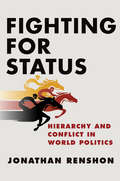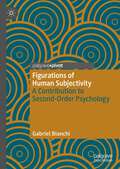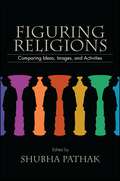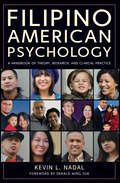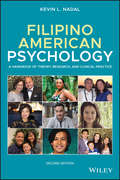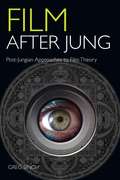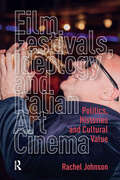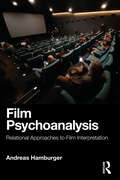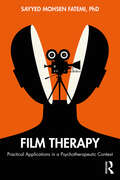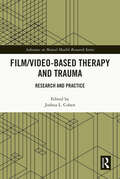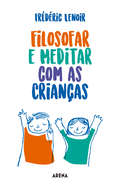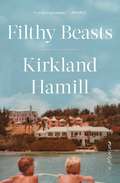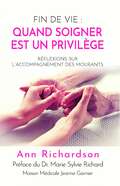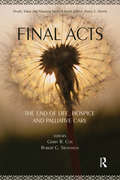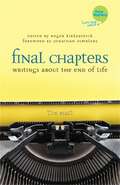- Table View
- List View
Fighting for Status: Hierarchy and Conflict in World Politics
by Jonathan RenshonThere is widespread agreement that status or standing in the international system is a critical element in world politics. The desire for status is recognized as a key factor in nuclear proliferation, the rise of China, and other contemporary foreign policy issues, and has long been implicated in foundational theories of international relations and foreign policy. Despite the consensus that status matters, we lack a basic understanding of status dynamics in international politics. The first book to comprehensively examine this subject, Fighting for Status presents a theory of status dissatisfaction that delves into the nature of prestige in international conflicts and specifies why states want status and how they get it.What actions do status concerns trigger, and what strategies do states use to maximize or salvage their standing? When does status matter, and under what circumstances do concerns over relative position overshadow the myriad other concerns that leaders face? In examining these questions, Jonathan Renshon moves beyond a focus on major powers and shows how different states construct status communities of peer competitors that shift over time as states move up or down, or out, of various groups.Combining innovative network-based statistical analysis, historical case studies, and a lab experiment that uses a sample of real-world political and military leaders, Fighting for Status provides a compelling look at the causes and consequences of status on the global stage.
Fighting for Their Lives: Inside the Experience of Capital Defense Attorneys
by Susannah ShefferHow do attorneys who represent clients facing the death penalty cope with the stress and trauma of their work? Through conversations with twenty of the most experienced and dedicated post-conviction capital defenders in the United States, Fighting for Their Lives explores this emotional territory for the first time. What it is like for these capital defenders in their last visits or phone calls with clients who are about to be taken to the execution chamber? Or the next mornings, in their lives with their families, in their dreams and flashbacks and moments alone in the car? What is it like to do this work year after year? (These attorneys had, on average, spent nineteen years doing capital defense.) Through vivid interviews amplified by the author's responses and commentary, these attorneys reveal aspects of their internal experience that they have never talked about until now. How do capital defenders manage the weight of the responsibility they carry? To what extent do they experience symptoms of trauma in the aftermath of losing a client to execution or as a result of the cumulative effects of engaging in capital defense work? What motivates them, and what do they draw upon, in order to keep engaging in such emotionally demanding work? Have they considered practicing other types of law? What can we learn from capital defenders not only about the deep and long-term effects of the death penalty but also about broader human questions of hope, effectiveness, success, failure, strength, fragility, and perseverance?
Fighting for Their Lives: Inside the Experience of Capital Defense Attorneys
by Susannah ShefferHow do attorneys who represent clients facing the death penalty cope with the stress and trauma of their work? Through conversations with twenty of the most experienced and dedicated post-conviction capital defenders in the United States, Fighting for Their Lives explores this emotional territory for the first time. What it is like for these capital defenders in their last visits or phone calls with clients who are about to be taken to the execution chamber? Or the next mornings, in their lives with their families, in their dreams and flashbacks and moments alone in the car? What is it like to do this work year after year? (These attorneys had, on average, spent nineteen years doing capital defense.) Through vivid interviews amplified by the author's responses and commentary, these attorneys reveal aspects of their internal experience that they have never talked about until now. How do capital defenders manage the weight of the responsibility they carry? To what extent do they experience symptoms of trauma in the aftermath of losing a client to execution or as a result of the cumulative effects of engaging in capital defense work? What motivates them, and what do they draw upon, in order to keep engaging in such emotionally demanding work? Have they considered practicing other types of law? What can we learn from capital defenders not only about the deep and long-term effects of the death penalty but also about broader human questions of hope, effectiveness, success, failure, strength, fragility, and perseverance?
Figural Synthesis (Psychology Revivals)
by Peter C. Dodwell; Terry CaelliThe aim of this book, originally published in 1984, was to bring together a number of approaches to this important topic. Significant advances had been made in the two decades before publication in our understanding of many aspects of the coding that occurs along the visual pathways. The major developments had been associated with probing the nature of "logical" processes, whether physiologically or psychophysically, and relatively less attention had been devoted to the problem of how such locally coded knowledge is put together to yield coherent representations of spatially (and temporally) extended patterns – that is, to figural synthesis. Thus, while a great deal was known about the responses of individual cells in the visual system to controlled stimulation, and about the specificity of the orientational and spatial-frequency tuning of channels assessed psychophysically, there had been much less discussion of how such knowledge could be brought to bear on the general problems of understanding pattern recognition.
Figurationen spätmoderner Lebensführung (Adoleszenzforschung #10)
by Susanne Benzel Julia Schreiber Benedikt Salfeld Katarina BuschDer Band versammelt Beiträge, die sich dem Konnex von Psyche und Gesellschaft widmen, wie er auch im Zentrum der Arbeiten von Benigna Gerisch und Vera King steht. Anhand unterschiedlicher Themen wie Adoleszenz, Migration, Alter, Geschlecht und Generationenverhältnisse werden verschiedene Dimensionen spätmoderner Lebensführung beleuchtet. Übergreifend wird so der Frage nachgegangen, wie das Ineinandergreifen von psychischen und sozialen Dynamiken untersucht und verstanden werden kann.
Figurations of Human Subjectivity: A Contribution to Second-Order Psychology
by Gabriel BianchiThis book takes an empirically grounded perspective on research in values, intimacy and sexuality, among other topics in psychology, to highlight the importance of searching for human subjectivity in its diversity, plurality and self-generativity. The author conducts an in-depth discussion on the methodological and epistemological issues enabling the study of subjectivity, and argues that in order to improve the contribution of psychology to human knowledge, a study of subjectivity must be at the forefront.This book presents a critical reflection of the author’s decades-long research within psychology to argue for a significant paradigm shift in the conception and execution of psychological research: a shift to “second order psychology”.
Figurative Language Comprehension: Social and Cultural Influences
by Herbert L. Colston Albert N. KatzFigurative language, such as verbal irony, metaphor, hyperbole, idioms, and other forms is an increasingly important subfield within the empirical study of language comprehension and use. Figurative Language Comprehension: Social and Cultural Influences is an edited scholarly book that ties together recent research concerning the social and cultural influences on figurative language cognition. These influences include gender, cultural differences, economic status, and inter-group effects, among others. The effects these influences have on people's use, comprehension, and even processing of figurative language, comprise the main theme of this volume. No other book offers such a look at the social and cultural influences on a whole family of figurative forms at several levels of cognition. This volume is of great interest to scholars and professionals in the disciplines of social and cognitive psychology, psycholinguistics, and second language acquisition, as well as cognitive and other fields of linguistics where scholars have interests in pragmatics, metaphor, symbol, discourse, and narrative. Some knowledge of the empirical and experimental methods used in language research, as well as some familiarity with theories underlying the use, comprehension, and processing of figurative language would be helpful to readers of this book.
Figuring Lacan: Criticism and the Unconscious (Routledge Library Editions: Lacan)
by Juliet Flower MacCannellIt could be argued that the influence of Lacan on modern literary studies has been greater than anyone’s. Lacan has historicised the universal or mythic perceptions of Freud, and thus lent a new status to literature as a cultural artefact. This book, originally published in 1986, aims to delineate the trends in the uses made of Lacan today; to examine the theoretical substructure by which his work is accommodated to literature; and to analyse the way in which his work ‘models’ the formal relation of the literary text to other texts, to history and to politics.
Figuring Religions: Comparing Ideas, Images, and Activities
by Shubha PathakFiguring Religions offers new ways of comparing prominent features of the world's religions. Comparison has been at the heart of religious studies as a modern academic discipline, but comparison can be problematic. Scholars of religion have been faulted for ignoring or reinterpreting differences to create a universal paradigm. In reaction, many of today's scholars have placed chief emphasis on the differences between traditions. Seeking to reinvigorate comparison and avoid its excesses, contributors to this volume use theories of metaphor and metonymy from the fields of philosophy, linguistics, and anthropology to look at religious ideas, images, and activities. Traditions considered include Hinduism, ancient Greek religions, Judaism, Buddhism, Daoism, Confucianism, Christianity, and Islam. By applying trope theories, contributors reveal elements of these religions in and across their cultural contexts.
Filial Therapy: Strengthening Parent-child Relationships Through Play
by Rise VanFleetSince the first edition of this book was first published in 1984, public and professional interest in Filial Therapy has grown substantially throughout the world. Research on the approach continues to grow. The third edition elaborates on the principles, values, and theories on which Filial Therapy is based and updates the research as well as the applications of the method to a wide range of presenting problems. References have been updated, derivative formats have been included, and the method's multicultural value continues to be highlighted.
Filipino American Psychology
by Kevin L. NadalPraise for Filipino American Psychology: A Handbook of Theory, Research, and Clinical Practice "Filipino American Psychology: A Handbook of Theory, Research, and Clinical Practice is destined to make a major contribution to the field of Asian American psychology and to the larger field of multicultural psychology. " -From the Foreword by Derald Wing Sue, PhD Professor of Psychology and Education, Teachers College, Columbia University "Dr. Nadal has done a superb job of locating the experiences of Filipino Americans within the larger scholarship on ethnic minority psychology, while also highlighting the complexity, richness, and uniqueness of their psychological experiences. This book should be a part of everyone's library. " -E. J. R. David, PhD Assistant Professor, Department of Psychology, University of Alaska Anchorage "Ranging from historical contexts to present-day case studies, theoretical models to empirical findings, self-reflection activities to online and media resources, Filipino American Psychology will engage, stimulate, and challenge both novices and experts. Without question, Dr. Nadal's book is a foundational text and a one-stop resource for both the Filipino American community and the community of mental health professionals. " -Alvin N. Alvarez, PhD Professor, San Francisco State University A landmark volume exploring contemporary issues affecting Filipino Americans, as well as the most successful mental health strategies for working with Filipino American clients Addressing the mental health needs of the Filipino American population-an often invisible, misunderstood, and forgotten group-Filipino American Psychology provides counselors and other mental health practitioners with the knowledge, awareness, and skills they can use to become effective and culturally competent when working with their Filipino American clients. Filipino American Psychology begins by looking at the unique cultural, social, political, economic, and mental health needs of Filipino Americans. Noted expert-and Filipino American-Kevin Nadal builds on a foundational understanding of the unique role and experience of Filipino Americans, offering strategies for more effective clinical work with Filipino Americans in a variety of settings. A must-read for mental health professionals as well as educators and students in the mental health field, Filipino American Psychology is an insightful look at the Filipino American community and the nuances of the Filipino American psyche.
Filipino American Psychology: A Handbook of Theory, Research, and Clinical Practice
by Kevin L. NadalDISCOVER THE FOUNDATIONS AND NUANCES OF TREATING THE MENTAL HEALTH OF FILIPINO AMERICANS Filipino American Psychology: A Handbook of Theory, Research, and Clinical Practice, 2nd Edition compiles the latest and best information about the psychology of Filipino Americans into a single, indispensable volume. Distinguished and celebrated professor and author, Dr. Kevin Nadal, explains in thorough detail the mental health issues facing many Filipino Americans today. It also covers effective techniques and strategies for working with the Filipino American population today. Filipino American Psychology uses reader-friendly language, along with numerous vignettes and case studies, to make accessible its in-depth treatment of the subject. The book covers a wide range of topics necessary to understand how to provide mental health treatment to Filipino Americans, including: Filipino and Filipino American Cultural Values Overcoming the Model Minority: Contemporary experiences of Filipino Americans Intersections of Gender and Sexual Orientation Multiracial and Multiethnic Filipino Americans Mental Health and Psychotherapy in the Filipino American community The book also includes a brand-new section on the historical traumas that still reverberate through the Filipino American community. Perfect for mental health practitioners and students who are likely to encounter this large cultural and ethnic group, Filipino American Psychology serves as a foundational volume in any complete mental health library.
Film After Jung: Post-Jungian Approaches to Film Theory
by Greg SinghPopular film as a medium of communication, expression and storytelling has proved one of the most durable and fascinating cultural forms to emerge during the twentieth century, and has long been the object of debate, discussion and interpretation. Film After Jung provides the reader with an overview of the history of film theory and delves into analytical psychology to consider the reaction that popular film can evoke through emotional and empathetic engagement with its audience. This book includes: an introduction to film scholarship discussions of key Jungian concepts Post-Jungian film studies beyond film. It also considers the potential for post-Jungian contributions to film studies, and the ways in which these can help to enrich the lives of those undergoing clinical analysis. Film After Jung encourages students of film and psychology to explore the insights and experiences of everyday life that film has to offer by applying Post-Jungian concepts to film, image construction, narrative, and issues in cultural theory. It will enhance the film student’s knowledge of film engagement as well as introducing the Jungian analyst to previously unexplored traditions in film theory.
Film Festivals, Ideology and Italian Art Cinema: Politics, Histories and Cultural Value
by Rachel JohnsonFilm Festivals, Ideology and Italian Art Cinema is the first systematic study of the role ideology plays in film festivals' construction of dominant ideas about art cinema. Film festivals are considered the driving force of the film industry outside Hollywood, disseminating ideals of cinematic art and humanist politics. However, the question of what drives them remains highly contentious. In a rare consideration of the European competitive film festival circuit as a whole, this book analyses the shared economic, geopolitical and cultural histories that characterise 'European A festivals'. It offers, too, the first extensive analysis of such festivals' role in the canonisation of select Italian films, from Rome, Open City to The Great Beauty and Gomorrah. The book proposes a new approach to ideology critique, one that enables detailed examination of how film festivals construct ideas about not only contemporary art cinema, but assumptions about gender, race, colonialism and capitalism.
Film Psychoanalysis: Relational Approaches to Film Interpretation
by Andreas HamburgerThrough the development of psychoanalytically informed film interpretation, Andreas Hamburger provides new insights into the experience of watching films and their influence upon our internal lives.Building upon a relational understanding of psychoanalysis, this volume develops a methodical procedure for psychoanalytical film interpretation, discusses individual aspects of the medium – such as editing, spatial and temporal design – and puts approaches to film psychoanalysis and cinema theory into a systematic perspective. Hamburger exemplifies his arguments in a detailed analysis of numerous film examples and demonstrates how an in-depth encounter with the medium can provoke new and surprising understandings. Providing an interdisciplinary perspective that crosses the study of popular culture with psychoanalytic theory, this book will be required reading not only for students and scholars of film, but also for psychoanalysts in practice and training.
Film Therapy: Practical Applications in a Psychotherapeutic Context
by Sayyed Mohsen FatemiUnlike any book on the market, Film Therapy introduces a new paradigm in exploring the subtexts of movies and their potential therapeutic dimensions. The book illuminates how feature films can entail psychological components that can facilitate the therapeutic process. By elaborating the key concepts of each film and their psychological and psychotherapeutic discussions, this book provides a demonstration of the films’ practical applications in a therapeutic setting, opening a new world for understanding and exploring the dynamics of films in human interaction. The book powerfully delineates the rarely discussed role of films in psychological realms and argues how films can be educationally inspiring for therapists, psychologists, and educators.
Film and Female Consciousness
by Lucy BoltonFilm and Female Consciousness analyses three contemporary films that offer complex and original representations of women's thoughtfulness and individuality: In the Cut (2003), Lost in Translation (2003) and Morvern Callar (2002). Lucy Bolton compares these recent works with well-known and influential films that offer more familiar treatments of female subjectivity: Klute (1971), The Seven Year Itch (1955) and Marnie (1964). Considering each of the older, celebrated films alongside the recent, unconventional works illustrates how contemporary filmmaking techniques and critical practices can work together to create provocative depictions of on-screen female consciousness. Drawing on the philosophy of Luce Irigaray in relation to women's cultivation of self-knowledge, this book examines female characters as they go through processes of transition or transformation. Bolton's approach demonstrates how the encounter between Irigaray and cinema can yield a fuller understanding of the fundamental relationship between film and philosophy. Through meticulous theoretical positioning, and close textual analysis, Bolton shows how cinema can create works of philosophy that investigate questions of personal identity, sexuality and relationships with others. Furthermore, the book explores the implications of this approach for filmmakers and spectators, and suggests Irigarayan models of authorship and spectatorship that reinvigorate the notion of women's cinema.
Film/Video-Based Therapy and Trauma: Research and Practice (Advances in Mental Health Research)
by Joshua L. CohenThis book uses film/video-based therapy to help build resilience in facing personal, communal, national, and global trauma triggers. Offering a rich and diverse range of perspectives on trauma, this volume advocates positive social change using therapeutic techniques in filmmaking as well as film/video-based therapy, in conjunction with expressive art therapies such as drama, dance, music, painting, drawing, and more. Chapter authors address issues in one’s home, community, country, and the world using integrative medicine and advocacy using film/video-based therapy and digital storytelling. The book highlights psychological trauma and how one can cope with the overwhelming triggers in today’s world. It represents an articulate and comprehensive analysis of the ways in which traumatic human experience impacts, and is modified by, film and video media. Representing a rich and diverse range of perspectives on trauma through the lens of a camera, the authors document important examples of moments in which artistic expression becomes human resilience. Demonstrating how the language of film can facilitate watching, processing, and discussing images of trauma in therapy, in the home, in the community, and in the world, this volume will be of interest to educators and mental health practitioners with an interest in advancing psychotherapy and counseling techniques.
Filming the Nation: Jung, Film, Neo-Realism and Italian National Identity
by Donatella Spinelli ColemanItalian neo-realism has inspired film audiences and fascinated critics and film scholars for decades. This book offers an original analysis of the movement and its defining films from the perspective of the cultural unconscious. Combining a Jungian reading with traditional theorizations of film and national identity, Filming the Nation reinterprets familiar images of well-known masterpieces by Roberto Rossellini, Vittorio de Sica and Luchino Visconti and introduces some of their less renowned yet equally significant films. Providing an illuminating analysis of film images across a particularly traumatic and complex historical period, Filming the Nation revisits the concept of national identity and its ‘construction’ from a perspective that combines cultural, psychoanalytic and post-Jungian theories. As such this book will be essential reading for all students and scholars of film and psychoanalysis.
Filosofar e Meditar com as Crianças
by Fréderéric LenoirO que dizem as crianças sobre a meditação: <P><P> - Maël (9 anos): É para se descansar e não pensar em nada. <P>- Charlie (9 anos): É para esvaziar a mente. <P>- Robin (11 anos, que já fez a experiência com o seu pai): Quando estamos enervados, esvaziamos a cabeça para pôr as emoções no ponto zero. <P>- Clara (9 anos): É uma coisa que acalma, procuramos a serenidade. <P>- Ouali (7 anos): É quando fazemos uma coisa relaxante. <P>- Maroua (8 anos): Serve para se ficar zen. <P>- Péniel (9 anos): É concentrarmo-nos na mente, não nos deixarmos perturbar. <P>«Este livro conta a extraordinária aventura que vivi com centenas de crianças em todo o mundo francófono, deParis a Montreal, passando por Molenbeek, Abidjan, Pézenas, Genebra, Mouans-Sartoux, Córsega e Guadalupe. Para quê esperar pelo final da aula para abordar temas existenciais: amor, respeito, felicidade, sentido da vida, emoções, etc.? Estes workshops filosóficos mostraram-me a capacidade surpreendente que as crianças de seis a dez anos têm para pensar. Além dos conceitos, aprendem as regras do debate de ideias e desenvolvem o discernimento e reflexão pessoal. Faço uma breve meditação ou prática da atenção plena antes, o que permite que todos estejam presentes no momento. Este livro fornece a metodologia e ferramentas práticas para qualquer um que deseje acompanhar as crianças na prática da atenção plena e do pensamento filosófico.»
Filthy Beasts: A Memoir
by Kirkland HamillRunning with Scissors meets Grey Gardens in this &“vivid tragicomedy&” (People), a riveting riches-to-rags tale of a wealthy family who lost it all and the unforgettable journey of a man coming to terms with his family&’s deep flaws and his own hidden secrets. &“Wake up, you filthy beasts!&” Wendy Hamill would shout to her children in the mornings before school. Startled from their dreams, Kirk and his two brothers couldn&’t help but wonder—would they find enough food in the house for breakfast? Following a hostile exit from New York&’s upper-class society, newly divorced Wendy and her three sons are exiled from the East Coast elite circle. Wendy&’s middle son, Kirk, is eight when she moves the family to her native Bermuda, leaving the three young boys to fend for themselves as she chases after the highs of her old life: alcohol, a wealthy new suitor, and other indulgences. After eventually leaving his mother&’s dysfunctional orbit for college in New Orleans, Kirk begins to realize how different his family and upbringing is from that of his friends and peers. Split between rich privilege—early years living in luxury on his family&’s private compound—and bare survival—rationing food and water during the height of his mother&’s alcoholism—Kirk is used to keeping up appearances and burying his inconvenient truths from the world, until he&’s eighteen and falls in love for the first time. A keenly observed, fascinating window into the life of extreme privilege and a powerful story of self-acceptance, Filthy Beasts is &“a stunning, deeply satisfying story about how we outlive our upbringings&” (Kirkus Reviews, starred review).
Fin de vie: Réflexions sur l’accompagnement des mourants
by Ann RichardsonUne mise en lumière des soins de fin de vie. La mort est un sujet gênant. Personne n'aime penser à ce que seront ses derniers jours. Mais s'il nous arrive d'y réfléchir, nous souhaitons qu'ils soient paisibles et tranquilles et nous voulons avoir la chance de pouvoir dire au revoir à nos proches. « Fin de vie : quand soigner est un privilège » vous entraîne dans les coulisses des soins palliatifs où vous vous rendrez compte des efforts énormes que font les infirmières, les médecins, les aumôniers et d'autres, y compris un chef cuisinier plein de bon sens, pour créer ce calme auquel nous aspirons tous. Peut-être vous intéressez-vous aux soins palliatifs pour un proche ? Peut-être vous demandez-vous si vous êtes fait pour travailler dans ce domaine ? Ou bien peut-être avez-vous simplement besoin d'être inspiré par le meilleur de l'humanité ? Ce livre est fait pour vous. VIVEMENT SALUÉ par la British Medical Association en 2008. « Des réflexions simples sur des sujets complexes dans le domaine des soins qui résonnent longtemps après en avoir terminé la lecture. » Newsletter du Cancer Nursing Forum, Royal College of Nursing « Un livre facile à lire qui surprendra de nombreux lecteurs par sa légèreté, son humanité et son ton rafraîchissant. Je le conseillerais à toute personne qui s’inquiète de sa propre fin de vie ou de celle d’un proche. » Dr Nansi-Wynne Evans, généraliste, BMA Medical Book Competition
Final Acts: The End of Life: Hospice and Palliative Care (Death, Value and Meaning Series)
by Gerry R. Cox Robert G. StevensonThe editors undertook this project to promote the International Conference on Death, Grief, and Bereavement in La Crosse, Wisconsin, USA. Throughout its history, the conference has attracted internationally known speakers. This book illustrates the quality of their presentations. Section One, "Professional Applications in End of Life Care," begins with Currier, Hammer, and Neimeyer's examination of the importance of the social network, including both religion and family, not just the individual, in working with those at the end of their lives. The authors analyse the impact of social support and its health implications. In Chapter 2, Parkes looks at the influence of child development on adult life and bereavement. Rather than simply showing how insecure child development affects loss as adults, he examines how insecure attachments in childhood can lead to extreme attachments to God, homes, territories, political leaders, and symbols and discusses interventions for these extreme attachments. Papadatou (Chapter 3) develops a model for professionals and caregivers who work with the dying. She suggests that those who give care to the dying also have multiple needs and also face suffering, examines the private world of professionals and what is healthy and what is unavoidable, and describes both functional and dysfunctional coping patterns used by professionals. Kobler (Chapter 4) uses case studies to explain how to develop and maintain relationships with children and their families in paediatric palliative care. She offers strategies for using rituals and ways to initiate and maintain relationships with children and their families. Thompson (Chapter 5) focuses on the effects of working in situations involving high levels of emotion and the stress that may result. He makes a strong case that such stress can do harm to individuals, groups, and whole organisations and offers a model for a more holistic approach that incorporates social and organisational strategies and practical ways to prevent and manage stress. Eves-Baine and colleagues (Chapter 6) examine the application of paediatric and adult-based principles to the newborn period. They discuss how to create the best situations for families when life-sustaining medical therapy has been withdrawn, how to support the family, and the ethical challenges that perinatal palliative care presents. The authors offer models for care through the journey of palliative and bereavement care. Section Two, "Facing End of Life and Its Care," begins with Gilbert's chapter presenting a strong argument that caregivers need to honour the multiple tracks that come with dying while maintaining a focus on the wishes of the dying person. He offers ways for the team to better meet the needs of the dying person. Koppleman (Chapter 8) follows the journey of a friend who faced death. It is a powerful story, told from the point of view of the dying in a scholarly fashion. Smith and Potter (Chapter 9) suggest that palliative care for the dying can be defined as offering "comfort care," both for those who are dying and for their loved ones. The authors present a model of the psycho-spiritual side of palliative care as a way of offering comfort to all those involved. Adams (Chapter 10) examines different methods of working with patients and families. It looks at the ways in which such work can be complicated by factors of geographic distance, differences in family reactions, differences in treatment plan concepts, and in meaning making. All of these factors may become stumbling blocks and may prevent the delivery of positive support. Pizzini (Chapter 11) looks at the experience of dying in prison from the perspective of inmates who are terminally ill, prison medical staff, and prison security staff. She discusses how to maintain dignity of the dying and a "good death" while in prison. McCord (Chapter 12) discusses attempts by hospice patients and others diagnosed with terminal illnesses to die either by their own hand or with physician assistance. She presents commo
Final Chapters: Writings About the End of Life
by Roger Kirkpatrick"The milkman cried when I told him you were dead. 'Last night,' I said, 'Mark died.'" This collection brings together 30 short stories and poems about dying and bereavement. Written by mothers, fathers, daughters, sons, wives, husbands and dying people, these moving pieces talk honestly about how it feels to care for someone who is dying, to grieve for a loved one, and to face death oneself. A candid story about a daughter's relationship with her mother's carer; an internal monologue on dementia; a deeply moving poem about losing a son to cot death; and a heartfelt story about a mother's end of life are some of the poignant pieces included. This collection provides an opportunity to think and talk about death and dying, too often a taboo subject, and offers readers the rare comfort and support of shared experience.
Final Contributions to the Problems and Methods of Psycho-analysis (Brunner-mazel Classics In Psychoanalysis And Psychotherapy Ser. #No. 8)
by Sandor FerencziThis final volume includes "Confusion of Tongues Between Children and Adults" in which Ferenczi formulates his controversal ideas on childhood sexuality, and the conflict between the languages of tenderness and passion. First published in 1955, this book contains papers written by Ferenczi during his last years and some of his unpublished notes. It demonstrates Ferenczi's combination of great clinical understanding and an almost uncanny insight into unconscious process. Among the forty important items included are papers on the following: "Freud's Influence on Medicine", "Laughter", "Epileptic Fits", "Dirigible Dreams", "Philosophy and Psycho-Analysis", "Paranoia", "The Interpretation of Tunes Which Come into One's Head" and "The Genesis of Jus Primae Noctis".
